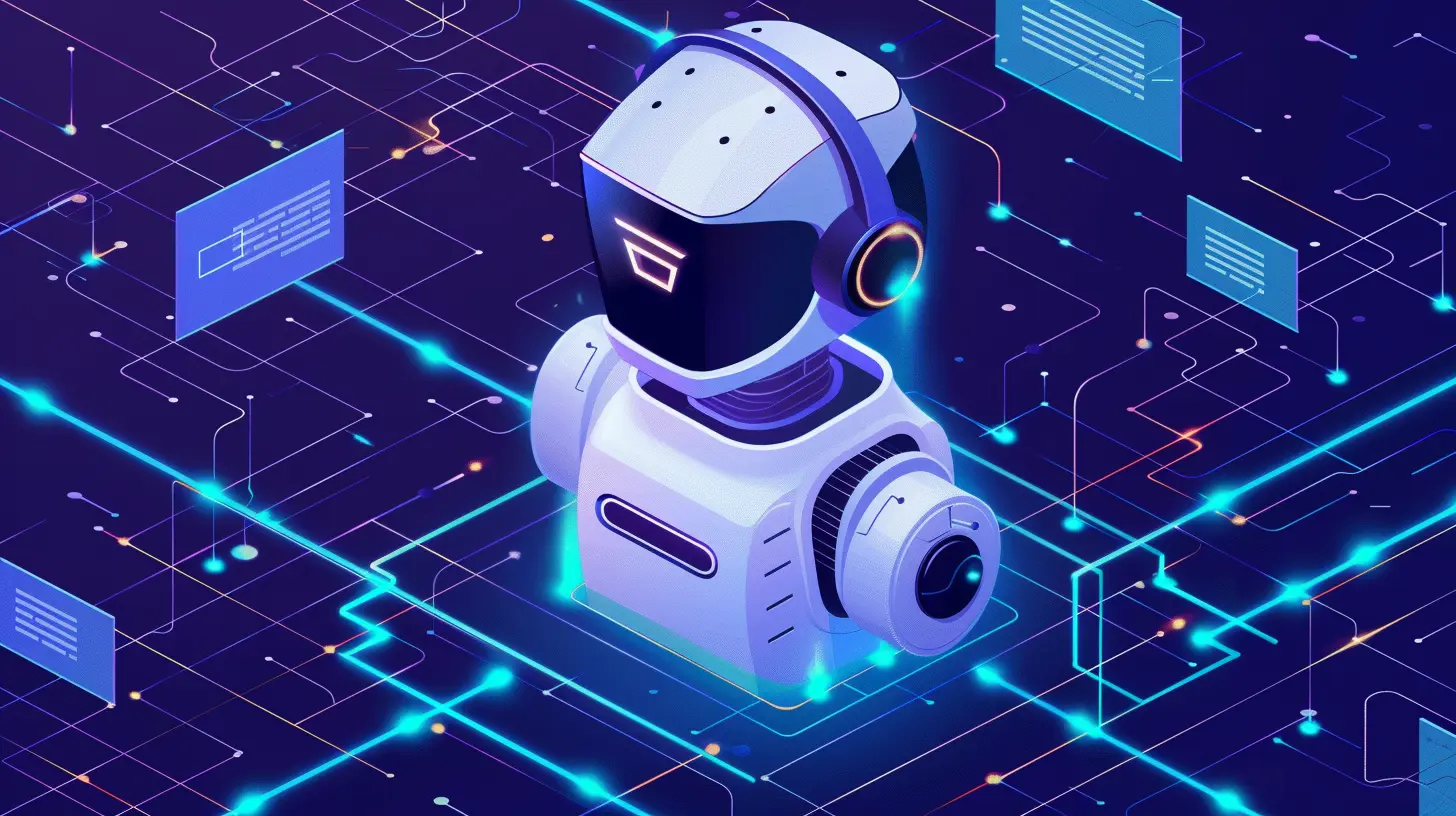How Machine Learning is Shaping the Future of Cloud Security
12 June 2025
If you've been paying attention to tech trends lately, you’ve probably heard the buzz around machine learning. At the same time, cloud computing has become a major player in how businesses store and access their data. Now, throw security into the mix—and suddenly you've got a trio that’s reshaping the online world. So, here’s the big question: how exactly is machine learning shaping the future of cloud security?
Buckle up, because this is one wild ride through algorithms, AI, cyber threats, and futuristic cloud fortresses. We're peeling back the curtain to see just how smart our systems are getting—and why that matters to you, me, and every business out there.
The Cloud: A Blessing Wrapped in a Security Challenge
Let’s face it: cloud computing has revolutionized everything. Whether you're backing up your phone photos or running a multi-million-dollar business platform, cloud storage and services make it all super flexible and accessible.But here’s the catch—it’s not all sunshine and rainbows. With greater flexibility comes greater risk. More access points? Yep. More data floating around? You bet. More cybercriminals licking their chops? Absolutely.
Traditional security tools weren’t built with the cloud in mind. Firewalls and antivirus software? They’re still important, but they’re not enough. That’s where machine learning steps in like a digital superhero.
So, What’s Machine Learning Got to Do with It?
You might already know that machine learning (ML) is a subset of artificial intelligence (AI). In plain English, it means teaching machines to learn from data and improve over time—without being specifically programmed every step of the way.Now, apply that concept to cloud security. Instead of relying on old-school, rule-based systems (which are slow and easy to outsmart), ML can analyze tons of data in real-time, spot patterns, and—wait for it—predict threats before they even happen.
Kinda like having a security guard who doesn’t just react to intruders but senses them before they even step through the door.
Real-Time Threat Detection: No More Waiting for Alarms
Gone are the days when systems would only alert you after the breach. Machine learning helps cloud security systems detect anomalies in real-time. It’s like having a radar that constantly scans the air for suspicious activity.Ever heard of behavioral analytics? ML models can study how users normally behave—like when they log in, how much data they access, and where they usually work from. So, if Bob from accounting suddenly logs in from Russia at 3 AM and starts downloading a bunch of sensitive files… guess what? That red flag goes up immediately.
Instead of reacting after the damage is done, ML empowers security tools to act proactively. That saves time, data, and potentially millions of dollars.
Automated Incident Response: Because Time is Everything
When a breach happens, every second matters. The longer it takes to respond, the worse it gets. Traditional response methods? Too slow. With machine learning, systems can automate the response.Imagine this: A malicious actor tries to flood your cloud server with a DDoS attack. An ML-powered system not only spots the attack in its early stages but also kicks in an automated defense—like rerouting traffic, blocking IP addresses, and alerting the security team—all within seconds.
It’s like having a digital bouncer that doesn’t just say “you’re not on the list,” but slams the door shut in real time and locks it.
Smarter Access Management: Only the Right People Get In
Access control is a huge part of cloud security. Not everyone in an organization should have access to everything. ML helps fine-tune access permissions by continuously monitoring usage behavior.Let’s say Karen from HR suddenly starts accessing files in the finance department. Machine learning will pick up on that anomaly and flag it. Maybe it’s innocent. Maybe it’s not. Either way, it gives admins a heads-up to take a closer look.
Over time, these systems get smarter. They understand the difference between a genuine user mistake and a potential insider threat. That’s next-level vigilance.
Phishing and Credential Theft? Not on ML’s Watch
One of the most common attack methods is phishing. Yep, those sneaky emails that pretend to be from your bank or boss, asking you to "verify" your credentials. They’re getting better—some of them look shockingly real.But so are our defenses. Machine learning algorithms can scan emails, identify dodgy links, and block them before they reach your inbox. They can even learn from past phishing attempts—spotting patterns like tone, language, and domain names that shift ever so slightly from the real ones.
It’s like turning your spam folder into a cyber-sleuth that never sleeps.
Data Encryption with an Intelligent Twist
We all know encryption is essential. It scrambles your data so that only the intended recipient can read it. But managing encryption keys—well, that’s tricky business. Lose one and you’re locked out. Worse, if someone else gets it, they’re in.Machine learning algorithms can help securely manage these keys. They can detect abnormal access patterns to encryption tools and offer adaptive security policies based on usage behaviors.
In other words, your encryption system goes from static and dumb to flexible and smart.
Predictive Intelligence: Future-Proofing Your Security
Here’s where things get really futuristic. Machine learning doesn’t just look at what's happening—it can predict what could happen.By analyzing historical data, usage trends, and known threat patterns, ML models can forecast potential vulnerabilities or attack vectors. It’s not clairvoyance, but it’s pretty close. Think of it like weather forecasting, except instead of telling you it might rain, it’s warning you that a data breach is forming on the horizon.
Now, security teams can prepare before the storm hits.
Challenges? Of Course. But They're Worth Tackling
Okay, let’s keep it real. Machine learning isn’t perfect. Training these systems requires tons of high-quality data. Plus, there’s the risk of false positives (where something harmless is flagged as malicious) and false negatives (when real threats slip through).And let’s not forget about the “black box” issue—sometimes we don’t really know why an ML system made a certain decision. That lack of transparency can be frustrating in highly regulated industries.
But the good news? Researchers and developers are working constantly to improve transparency through explainable AI (XAI), which aims to make machine learning decisions more understandable.
The Marriage of AI and Cloud Security Is Just Getting Started
We're only scratching the surface of what’s possible with machine learning in cloud security. New advancements are being made every week. From integrating ML with blockchain for enhanced identity management, to combining it with edge computing for real-time threat mitigation at the device level—the future is wide open.And as cybercriminals get more sophisticated, our defenses need to evolve just as fast. Machine learning gives us the adaptability and speed we need to keep up.
Final Thoughts: Machine Learning Isn’t Just a Trend—It’s the Future of Staying Safe in the Cloud
Let’s face it: the cloud isn’t going anywhere. It’s becoming the cornerstone of everything digital. But with great power comes—you know the rest.Machine learning is equipping us with tools that not only fight fires but help prevent them from starting in the first place. It’s fast, smart, and always learning. While it's not a perfect system (yet), it’s miles ahead of the rigid, reactive security methods of the past.
So, as businesses move more of their operations into the cloud, embracing ML-powered security isn’t just a smart move—it’s a necessary one. Because in this digital age, staying one step ahead isn’t optional. It's survival.
all images in this post were generated using AI tools
Category:
Cloud SecurityAuthor:

Jerry Graham
Discussion
rate this article
2 comments
Bridget McIntosh
Intriguing insights! I'm excited to see how machine learning can enhance cloud security. It raises so many questions about adaptability and potential challenges in this evolving landscape!
June 18, 2025 at 3:41 AM

Jerry Graham
Thank you! I share your excitement about the potential of machine learning in cloud security—it certainly presents both exciting opportunities and important challenges to consider.
Siena McAdams
Exciting insights! Machine learning truly is revolutionizing cloud security for a safer digital future.
June 12, 2025 at 4:38 AM

Jerry Graham
Thank you! I’m glad you found the insights exciting—machine learning is indeed transforming cloud security in remarkable ways!


